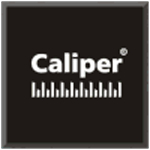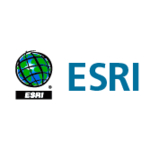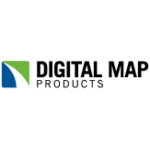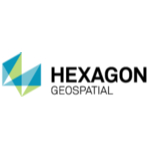List of Best GIS software
Showing 10 of 64 productsMango is a and versatile software that will revolutionize the way you do business. With Mango, you can streamline your processes, increase efficiency, and boost productivity. Say goodbye to manual tasks and hello to a smarter, more efficient way of m...Read Mango Reviews
Maptitude is a versatile and user-friendly mapping software that helps individuals and businesses visualize data in an interactive way. With its powerful mapping and data analysis tools, Maptitude provides an efficient and effective solution for crea...Read Maptitude Reviews
ArcGIS is a and versatile mapping software that allows users to create and analyze spatial data with precision and efficiency. With its intuitive interface tools, ArcGIS has become a go-to solution for professionals in various industries such as urba...Read ArcGIS Reviews
Maptive is a mapping software that simplifies complex data and transforms it into insightful visualizations. With its user-friendly interface tools, Maptive allows businesses and organizations to effectively analyze their data and make informed decis...Read Maptive Reviews
LandVision is an innovative mapping and property analysis tool designed to empower real estate professionals with the tools they need to make informed decisions. With seamless integration of data layers, advanced search capabilities, and visual analy...Read LandVision Reviews
Discover the power of location intelligence with Map Business Online. This robust business mapping software allows you to visualize and analyze your data in a geospatial context, enabling you to make strategic decisions and optimize your operations...Read Map Business Online Reviews
eSpatial, the ultimate mapping software for all your business needs. Our intuitive platform provides a wide range of tools for visualizing and analyzing your data, making it easier for you to make informed decisions and drive business growth. With eS...Read eSpatial Reviews
MapInfo Pro is a location intelligence software designed to help businesses and organizations make data-driven decisions. With its advanced mapping and analysis tools, MapInfo Pro allows users to visualize, analyze, and interpret location-based data,...Read MapInfo Pro Reviews
GeoMedia is a software developed by Hexagon Geospatial that allows users to visualize, manage, and analyze geospatial data in a dynamic is a way. Designed for professionals in various industries, GeoMedia is the perfect tool for creating and sharing...Read GeoMedia Reviews
Tactician the ultimate strategic software for businesses. Designed to streamline operations and maximize efficiency, Tactician is the go-to solution for businesses looking to stay ahead of the competition. With its innovative features and user-friend...Read Tactician Reviews
- What Is GIS Software?
- Top Reasons Why Businesses Need GIS Software?
- What Are the Top Key Features of GIS Software?
- What Are the Top Benefits of GIS Software?
- What Are the Steps to Choose the Right GIS Software?
- What Are the Types of GIS Software for Different Industries?
- What Are the Technology Trends for Best GIS Software?
- What Are the Deployment Options for GIS Software?
What Is GIS Software?
Geographic Information Systems (GIS) software is a computer-based technology utilized for the purpose of storing, analyzing, and visualizing geographical data, including but not limited to survey maps and satellite pictures.
The system can be likened to a database due to its ability to store data in a structured and ordered fashion. However, a distinguishing characteristic of GIS systems software in comparison to a conventional database is its utilization of geographical data to visually represent the interconnections among various datasets.
For instance, it enables the examination of the relationship between population density within a specific area and the corresponding number of road networks present in that particular region. GIS tools employ multiple layers of data to generate maps and do spatial relationship analysis.
In the field of healthcare, Geographic Information System (GIS) software can be utilized to visually represent locations that are experiencing a dearth of resources or an excess of a specific record or indicator. This can include identifying regions that are underserved in terms of their accessibility to health services.
This analysis has the potential to provide valuable insights for policy formulation and strategic planning endeavors. Geospatial software solutions also hold significant importance in the realm of disaster monitoring and prevention.
Through the integration of weather data, disaster reports, population data, topographical maps, and various other data sources, GIS systems software provide the capability to enhance the accuracy of natural catastrophe propagation forecasts and facilitate more efficient disaster response strategies.
Geographic Information System (GIS) technology is extensively employed in diverse sectors, encompassing education, industry, and government. Geospatial analysis offers significant contributions to the understanding of geographical landscapes and facilitates informed decision-making processes for enterprises through the utilization of data-driven approaches.
Top Reasons Why Businesses Need GIS Software?
1. Visualizing spatial data — Geographic Information Systems (GIS) have the capability to assist organizations in generating visual representations of diverse datasets, encompassing but not limited to population density, demographic information, soil composition, weather patterns, and other relevant factors.
2. Optimizing processes — Organizations have the ability to utilize GIS tools in order to enhance their decision-making processes regarding operational efficiency, including the optimization of delivery routes and service outlets.
3. Analyzing sales markets — Online GIS software have the capability to unveil sales markets within a certain geographical region, hence facilitating enterprises in gaining a more comprehensive understanding of their client base.
4. Targeting marketing — Organizations have the ability to employ GIS systems software in order to effectively identify and focus on potential clientele, while also conducting comprehensive analyses of consumer behavior through the utilization of tools such as heat maps.
5. Minimizing risk — Organizations have the capacity to employ Geographic Information Systems (GIS) for the purpose of identifying environmental or safety risks within a certain geographical region, including the identification of areas susceptible to flooding or seismic activity.
6. Monitoring operations — GIS tools have the capability to furnish firms with precise and up-to-date information regarding their operational advancements, so enabling them to effectively monitor and track progress in order to enhance overall efficiency.
7. Decision making — Geospatial software solutions offer firms valuable geographical insights that facilitate strategic decision-making processes, including infrastructure development and real estate acquisitions.
8. Asset Tracking — The best GIS tools have the potential to assist organizations in effectively managing their fleet of vehicles and equipment, monitoring project advancements, and ensuring the optimal operation and safety of assets.
9. Situational messaging — Top GIS software can facilitate the examination of various surroundings to identify potential hazards or possibilities, so enabling organizations to make informed decisions and enhance their communication strategies.
10. Tracking customer behaviour — Online GIS software has the capability to assist organizations in monitoring and analyzing consumer behavior and preferences within distinct geographical areas.
11. Connecting data streams — GIS tools possess the capability to facilitate the integration of diverse data streams from several sources, including web-based platforms, social media platforms, and other relevant data sources, thereby enabling organizations to consolidate these disparate data streams into a cohesive platform.
12. Increasing accuracy — Geographic Information Systems (GIS) have the capability to furnish organizations with precise and current data pertaining to a certain geographical region, hence empowering them to enhance their decision-making processes.
13. Identification of new markets — Organizations have the ability to utilize The best GIS tools in order to discern novel marketplaces and regions that possess unexplored potential.
14. Monitoring competitive landscape — Geographic Information Systems (GIS) have the capability to assist businesses in effectively monitoring the competitive landscape within a certain geographic region. By leveraging GIS technology, businesses can discover possible areas of opportunity or dangers that may arise within the market..
15. Documenting activities — Geospatial software solutions have the capability to assist enterprises in the documentation of their activities through the integration of visual components, including textual information, photographs, and videos. These visual elements can be easily shared with relevant stakeholders.
What Are the Top Key Features of GIS Software?
1. Data visualization: Geographic Information System (GIS) software facilitates the visualization and analysis of geographical data. The visualization capabilities encompass both vector and raster data, encompassing point maps, line maps, area maps, and 3D representation.
2. Automated geoprocessing: GIS software is capable of performing a range of operations, including the generation of spatial queries, identification of edges and corners within data, re-projection of data, extraction of attributive information, and utilization of spatial analytic tools.
3. Feature analysis: Top GIS software has the capability to do analysis on various combinations of spatial data layers, encompassing road networks, population distribution, vegetation patterns, contour lines, and water bodies. This analytical process facilitates the creation of digital elevation models.
4. Real-time updates: GIS tools facilitates the timely retrieval and dissemination of data, thereby empowering users to make informed decisions based on intelligence-driven insights.
5. Imagery integration: Geographic Information System (GIS) software facilitates the integration of imagery and the extraction of valuable insights through analysis.
6. Collaboration: GIS systems software facilitates user cooperation by providing mechanisms for secure access sharing and facilitating shared decision-making processes.
7. Geocoding: Online GIS software facilitates the transformation of address data into geographic coordinates, enabling users to identify and visualize spatial information.
8. Georeferencing: Top GIS software facilitates the superimposition of fresh images onto pre-existing maps through the utilization of a geographic coordinate system as a point of reference.
9. 3D modelling: Geospatial software solutions provides extensive 3D modeling functionalities to facilitate the analysis of various geospatial data sources, including aerial pictures, satellite imagery, digital terrain models, and road networks.
10. Web-based mapping: The best GIS tools facilitates the online publication of maps and enables users to engage in collaborative efforts via a web browser.
What Are the Top Benefits of GIS Software?
1. Improved Decision-Making: Geographic Information System (GIS) software offers users the ability to access extensive datasets and utilize sophisticated mapping tools, hence facilitating enhanced decision-making across a diverse range of applications.
2. Better Planning: Through the examination of spatial consequences associated with different projects or initiatives, GIS systems software has the capability to offer augmented understanding, hence assisting in the process of making informed planning decisions.
3. Improved Visualization: Online GIS software software provides users with sophisticated visualization functionalities, enabling them to gain enhanced insights into the fundamental patterns and interconnections among data points.
4. More Accessible Data: Geographic Information System (GIS) software facilitates the enhancement of data accessibility, hence offering a potent tool for the investigation and identification of patterns or anomalies.
5. Streamlined Project Implementation: The utilization of GIS software can enhance project implementation by offering a more thorough perspective on geographical data.
6. Enhanced Analysis: Top GIS software facilitates a thorough examination of the spatial dimensions pertaining to a specific issue or obstacle.
7. Informed Resource Allocation: Online GIS software can facilitate the efficient allocation of resources by offering valuable insights into the optimal areas to concentrate limited resources or attention.
8. Improved Cartographical Representation: Geographic Information Systems (GIS) technology facilitates the production of high-quality cartographic representations, hence providing improved visualization capabilities.
9. More Intuitive Interface: The best GIS tools possess a user interface that is characterized by enhanced intuitiveness, hence facilitating a more streamlined and effective user experience.
10. Automated Solutions: Top GIS software facilitates the development of automated solutions by leveraging data acquired through GIS technology.
What Are the Steps to Choose the Right GIS Software?
1. Analyze Your Data: The initial step in this process is identifying the specific sort of data that is required for the task at hand. Subsequently, an evaluation should be conducted to ascertain which Geographic Information System (GIS) software platform have the capability to effectively manage this particular type of data.
2. Evaluate Your Needs: Top GIS software is imperative to ascertain the budgetary constraints, timetable, and desired level of sophistication for the program in question. It is important to evaluate if one requires fundamental GIS mapping capabilities or a more sophisticated system that offers specialized functions.
3. Research Vendor Options: Conduct a comprehensive investigation of multiple vendor alternatives in order to ascertain the most suitable solution that aligns with your requirements. It is imperative to take into account the factors of customer service and user reviews.
4. Compare Pricing and Licensing: The allocation of resources towards the acquisition of Online GIS software might constitute a significant financial outlay.
Conduct an analysis to ascertain the vendors that provide the most economically efficient goods within the constraints of your budget. It is imperative to be cognizant of any accompanying expenditures, such as licensing fees or potential improvements.
5. Request Demo Versions: Kindly solicit a demonstration version for each of the software options under consideration. Engage in experimentation with each product to assess its alignment with your expectations.
6. Make the Final Decision: After carefully considering all available alternatives, one might proceed to reach a conclusive determination.
One should engage in self-inquiry by posing queries such as "which vendor possesses the most optimal features and functionalities that align with my specific requirements?" and "which one provides the most economically efficient product?"
7. Plan Future Upgrades: As technological advancements continue to progress, it is anticipated that the necessity for upgrading GIS software will arise in order to ensure compatibility with the latest versions. It is imperative to engage in thorough discussions with the vendor and strategically plan for all forthcoming improvements.
What Are the Types of GIS Software for Different Industries?
GIS software for various businesses can be categorized into two primary classifications: desktop software and server software. Desktop Geographic Information System (GIS) software is predominantly utilized for individualized duties, encompassing the creation of maps and the examination of data.
Some examples of desktop GIS systems software include ArcGIS Desktop, Geo-Media Professional, MapInfo, and QGIS. The primary application of server GIS software is the facilitation of large-scale mapping and data analysis.
Some examples of server GIS software are ArcGIS Server, GeoServer, and MapServer. Server software is more suitable for businesses or individuals engaged in extensive projects due to its ability to facilitate cooperation among several users and provide access from various clients.
What Are the Technology Trends for Best GIS Software?
Currently, the primary technological advancements in the field of Geographic Information System (GIS) software are around the utilization of cloud computing, enhanced user interfaces, and the incorporation of 3D visualization functionalities.
The advent of cloud computing has facilitated the ability of Geographic Information System (GIS) software to access and effectively utilize data from various geographically distributed sites, hence enabling the creation of dynamic analyses.
Enhanced user interfaces facilitate the utilization of GIS software by a diverse range of users, enabling them to operate the software more efficiently and intuitively. Ultimately, the incorporation of 3D visualization capabilities inside GIS systems offers an enhanced level of precision in representing spatial data.
Consequently, this heightened accuracy empowers users to make more informed decisions by relying on more precise outcomes.
What Are the Deployment Options for GIS Software?
Geographic Information System (GIS) software has the capability to be implemented through many deployment methods. One such approach involves utilizing a desktop application that is installed on a personal computer. This particular method is frequently employed for modestly sized endeavors, such as gathering data for a research project of limited scope.
Another alternative is to utilize an enterprise Geographic Information System (GIS) framework, which is implemented on a server and accessed over a network, enabling concurrent data access for numerous users. Additional deployment options encompass mobile devices and cloud-based solutions.
In the context of mobile devices, the geographic information system (GIS) data is saved and processed on a portable computing device, such as a smartphone or tablet. Cloud deployment refers to the practice of storing and processing geographic information system (GIS) data on a cloud-based service, such as Amazon Web Services (AWS).










